Sign up for The Media Today, CJR’s daily newsletter.
In December, at a town hall in Iowa hosted by Fox News’s Sean Hannity, Donald Trump suggested that he’d like to be a dictator for a day. “You are promising America tonight,” Hannity asked, “you would never abuse power as retribution against anybody?” Trump replied, “Except for day one.” It was a stunning statement, quickly picked up by news outlets—including cable network anchors, who asked, “Do you think Trump might try to be a dictator?”
Anchors on the three major cable networks—CNN, MSNBC, and Fox News—asked versions of that question more than twenty-seven times in the course of the week. Cable news reactions to Trump’s rhetoric were nothing new, but the focus on whether he might be a fascist, a threat to democracy, seemed to represent a shift from past election cycles, during which the press paid more attention to his racism and misogyny.
Using a tool called the GDELT Television Explorer, we analyzed data from the Internet Archive, which maintains records of closed-captioning from cable networks. We examined how many times the transcripts, which GDELT breaks down into fifteen-second segments, included the term “Trump” along with a signifier of racism, misogyny, or fascism between January 2015 and May 2024.
Cable’s Coverage of Trump Now Mentions Fascism More Than Racism or Misogyny
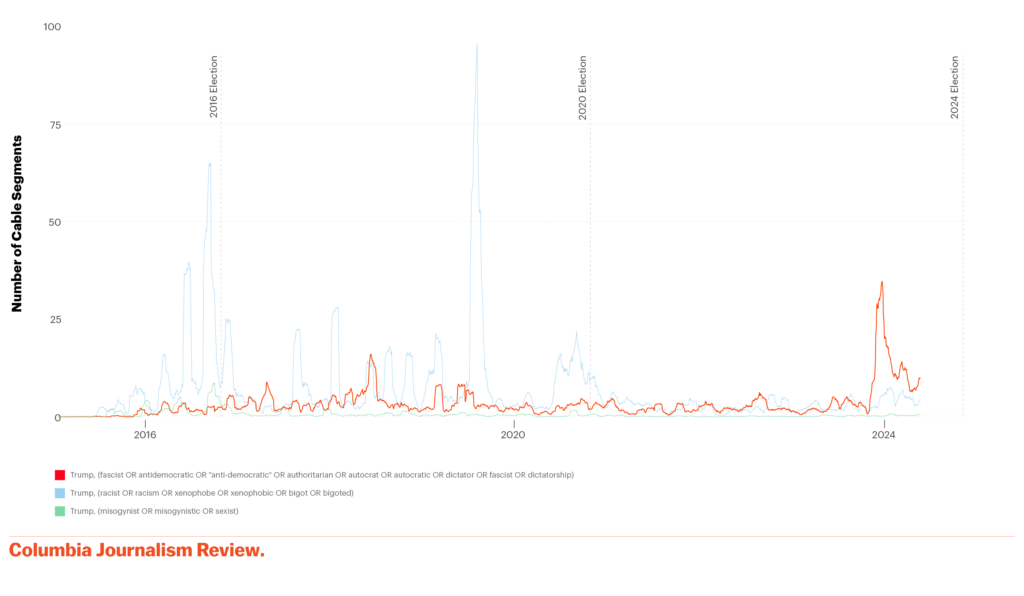
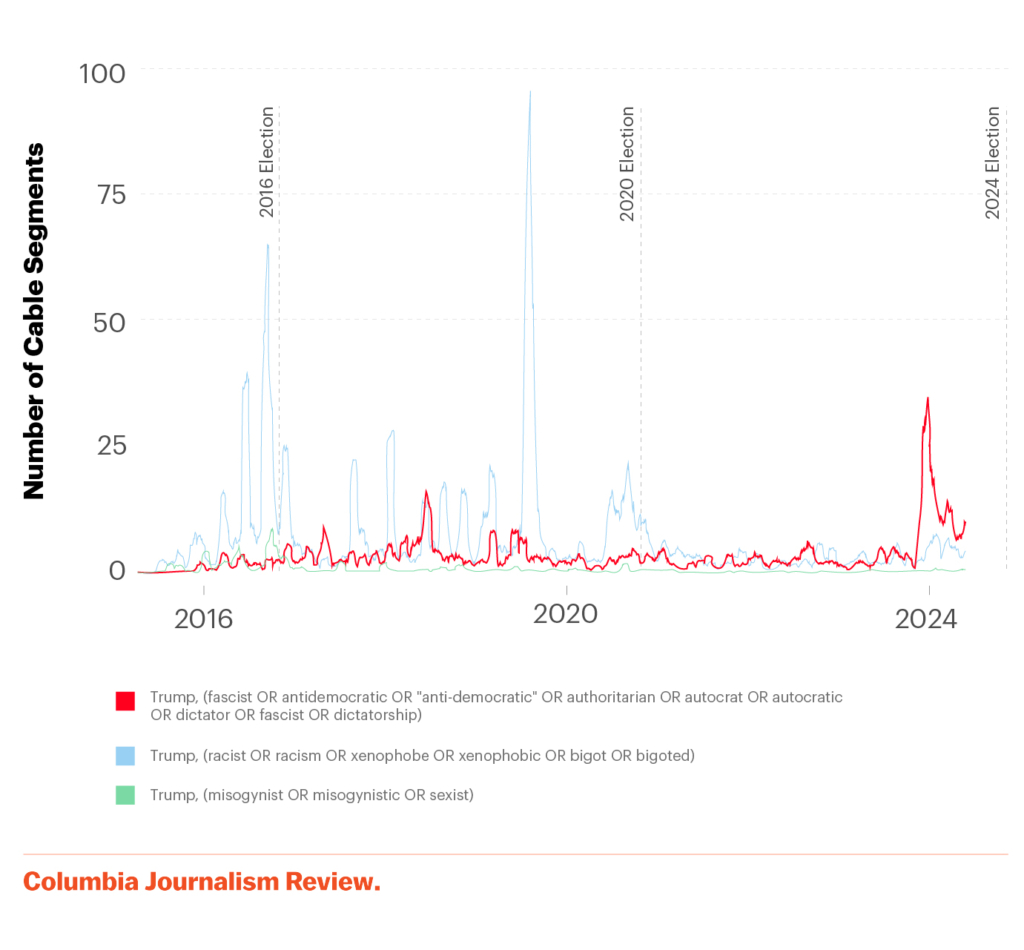
A clear trend line emerged: the number of mentions of Trump and words associated with fascism—antidemocratic, autocratic, authoritarian, dictatorial, and the like—has risen, especially in the past year. Between the 2016 and 2020 election cycles, these mentions more than doubled, and by the 2024 campaign, their frequency intensified dramatically: mentions of fascism more than tripled. So far this election, cable networks have mentioned Trump’s name and fascism 2.5 times more than they have mentioned it alongside terms associated with racism and at least 30 times more than they have mentioned it alongside terms associated with misogyny.
The appearance of words related to fascism doesn’t necessarily imply that the media is accusing Trump of being a fascist. Segments have discussed Trump’s associations with known fascist leaders, his expressed admiration for authoritarian leadership, his use of language that borrows from authoritarian rhetoric, and suggestions that his agenda exhibits fascist tendencies. Nor does the steep increase of mentions mark a new revelation; discussions of Trump and fascism have taken place since he rose to political prominence. Yet what the data shows is that covering Trump with fascism in mind has become increasingly common—that networks are now, as never before, focused on this angle of the Trump story.
While there was an increase in mentions of Trump and fascism across all three networks, MSNBC led the charge. Since 2022, MSNBC has mentioned Trump and fascism 3,032 times—about 3.5 times more frequently than CNN did, and 4.5 times more than Fox. (A spokesperson for MSNBC declined to comment.)
Comparing Cable Networks’ Coverage of Fascism and Trump
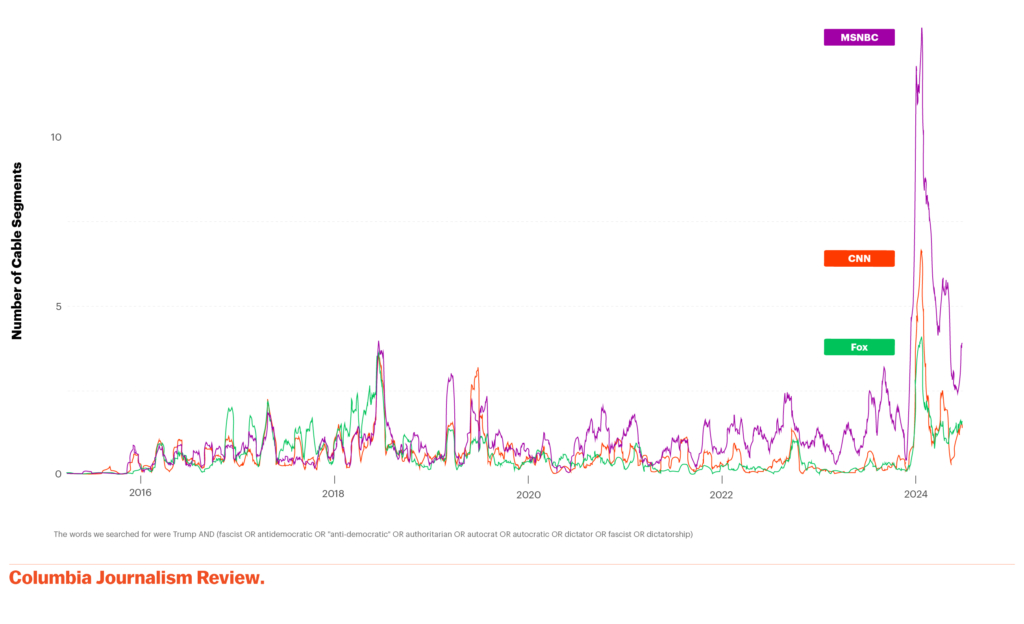
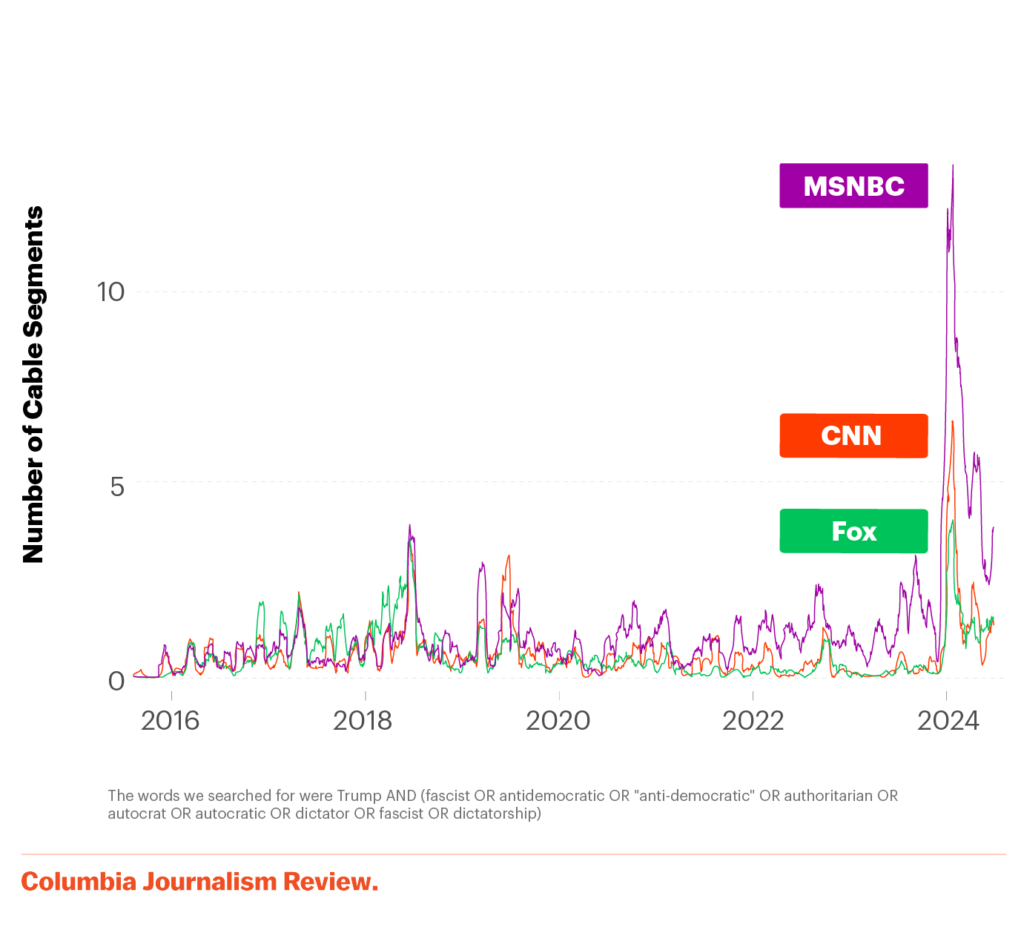
Trump’s Speech Often Drives the Fascism Conversation
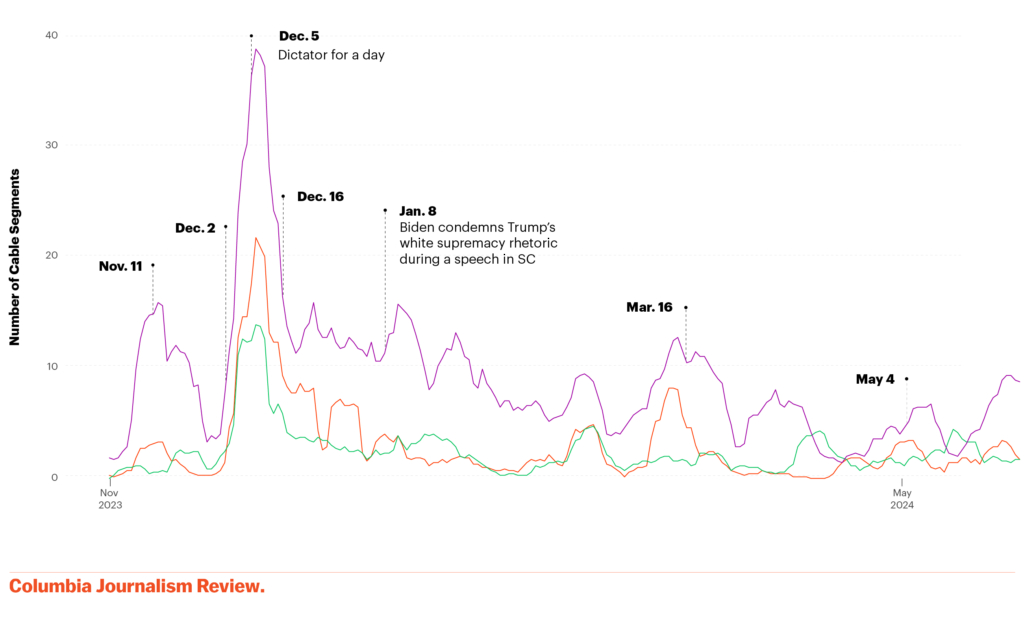
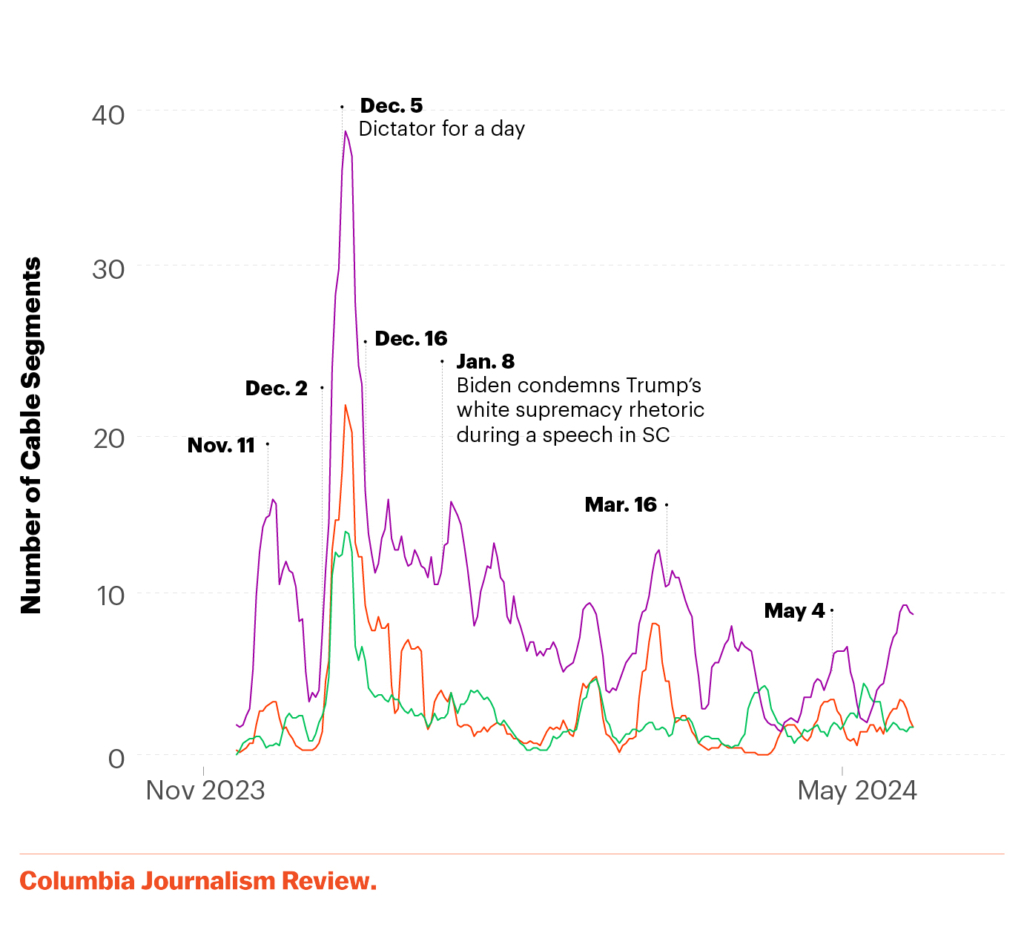
The spikes on this graph correspond with his comments:
November 11, 2023
“We will root out the communists, Marxists, fascists, and radical-left thugs that live like vermin within the confines of our country.… The threat from outside forces is far less sinister, dangerous, and grave than the threat from within.”
December 2, 2023
“He’s been weaponizing government against his political opponents like a third-world political tyrant.… Biden and his radical-left allies like to pose as standing up as allies of democracy.… Joe Biden is not the defender of American democracy, Joe Biden is the destroyer of American democracy.”
December 5, 2023
When asked, “Under no circumstances, you are promising America tonight, you would never abuse power as retribution against anybody?” Trump responded: “Except for day one.”
December 16, 2023
“They’re poisoning the blood of our country. That’s what they’ve done. Mental institutions. Prisons all over the world. Not just in South America. Not just the three or four countries that we think about. But all over the world they’re coming into our country—from Africa, from Asia, all over the world.”
March 16, 2024
“I don’t know if you call them ‘people.’ In some cases, they’re not people, in my opinion.… But I’m not allowed to say that, because the radical left says that’s a terrible thing to say.… These are bad—these are animals.”
“If I don’t get elected, it’s going to be a bloodbath for the whole…country.”
May 4, 2024
“These people are running a Gestapo administration.… And it’s the only thing they have. And it’s the only way they’re going to win, in their opinion, and it’s actually killing them. But it doesn’t bother me.”
The focus on Trump’s authoritarian rhetoric reflects growing concern about his potential return to power. If networks didn’t feel comfortable focusing on Trump as a threat to democracy before, they do now.
Has America ever needed a media defender more than now? Help us by joining CJR today.



